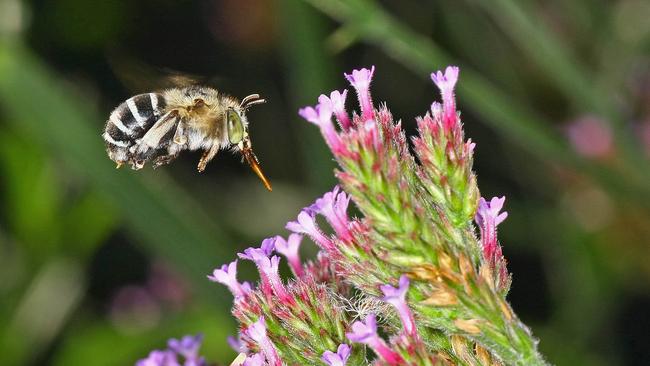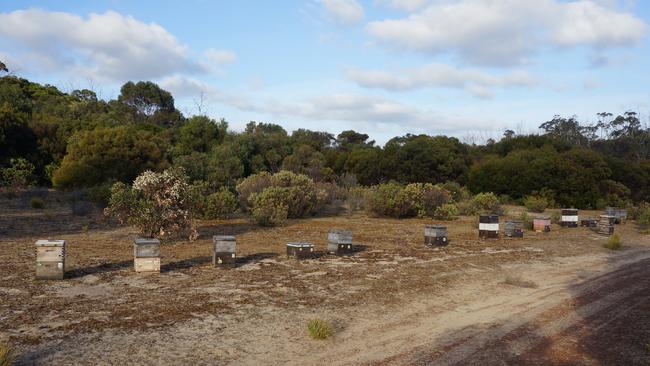Stinging rebuke over bid for park bee hives in draft Apiary Policy
A State Government push for more hives for honey bees in public parks would be bad for the environment, scientists say.
SA News
Don't miss out on the headlines from SA News. Followed categories will be added to My News.
Scientists advocating for native bees and the plants they pollinate are shocked to discover the State Government wants to allow more commercial hives for European honey bees in national parks.
They argue a draft policy goes against evidence of environmental harm across the ecosystem.
The apiary policy was sent to the Friends of Parks for comment but was not opened to general public consultation.
Friends of Parks president Duncan MacKenzie said he did not reply personally but instead sent the government’s proposal out to members asking for comments, and then forwarded them to the Environment Department.
He said he deferred to scientists on the issue and agreed “it would seem it’s not really a good idea to release European honey bees into parks”.

An eminent group of concerned scientists, including experts from the state’s three major universities and the South Australian Museum, plus the president of the Nature Conservation Society of SA, argue that honey bees:
COMPETE with native bees, other insects, birds and mammals for food (pollen or nectar);
TAKE over bird-nesting hollows and nest boxes;
POLLINATE weeds;
REDUCE seed set on native plants and floral resources in a wide area around the hives, and;
SPREAD diseases.
Environment Minister David Speirs and the department declined to respond to the concerns.

Primary Industries and Regional Development Minister David Basham said the policy was based on a shortage of pollination services for SA’s horticulture and agriculture industries.
He said demand for the almond industry alone was projected to be an additional 20,000 hives this year.
“The only way we are going to get close to meeting the required pollination demand is to allow more beekeepers to set up hives in public lands, as has been allowed in the past,” Mr Basham said.
“We are not reinventing the wheel when it comes to access for honey bee pollination in national parks.
“We are simply wanting greater access to areas where hives already successfully interact with the environment.”

Currently about 340 sites on crown land and national parks are used by beekeepers, mainly in regional areas, including 300 sites in the Ngarkat Conservation Park, in the southeast. Mr Basham said the government established an apiary task-force to support growth in the sector and explore beekeeping sites on public land to help meet demand.
“Our government has been consulting on a review of the apiary policy which looks to improve the framework in place and provide more access on public lands for beekeepers,” he said.
Feedback on the policy from the group of scientists was still being reviewed.



